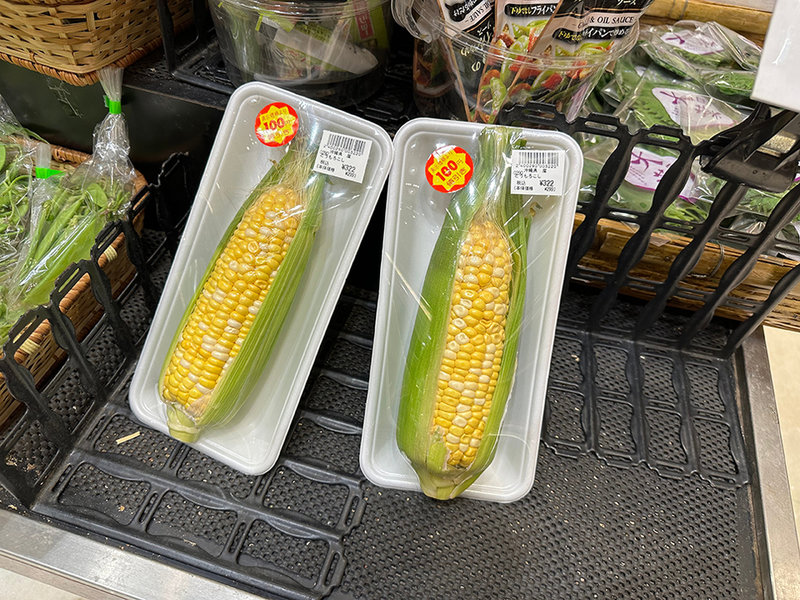Feature
APAC’s single-use plastic efforts remain a mixed bag
Countries within the region continue to make strides with regulation, but investment and recycling infrastructure is still needed. By Eve Thomas.

Individually wrapped corn at a supermarket in Tokyo. Credit: image_vulture via Shutterstock
With a population of around 4 billion, the Asia and Pacific region (APAC) is experiencing a period of rapid urbanisation.
According to a UN report, the region is already home to 28 megacities, with an estimated 120,000 people migrating to cities across APAC every day. If the trend continues, 3.3 billion are expected to live in urban environments in the region by 2050.
The swift urbanisation has driven consumption and increased the demand for single-use packaging, particularly in the flexible plastic sector. On its current trajectory, plastic waste generation in the APAC is expected to reach 140 million tonnes by 2030.
Speaking to Packaging Gateway about the impact of development in APAC, Mauren Stevenson, Head of Business Development at Cullen Packaging, commented:
“The region is home to some of the most populous countries in the world, with many experiencing rapid urbanisation. With that comes lifestyle changes and new consumption habits, ultimately leading to massively increased demand for packaged consumer goods.
“Plastic is an effective, cheap, accessible product. Without regulation on its use or viable cost-effective alternatives to it, specifically in the single-use space, it will continue to be adopted.”
Regulatory challenges and progress in APAC's flexible packaging
Flexible packaging has proved to be a key pain point in APAC, with lower associated costs having made the region a popular location for production, particularly for the food sector.
GlobalData, Packaging Gateway’s parent company, found that APAC had a 52.2% share in the flexible packaging market in 2023; it also noted that the presence major manufacturers like Uflex and Fuji Seal International is contributing to the industry’s success in the region.
“Single use plastic packaging – especially flexible packaging – is in more widespread use in APAC generally, especially in the form of pouches and sachets (for example for single serve packaged water in India),” explains GlobalData analyst Dominic Cakebread. “One of the main reasons for this is the lower cost of single use flexible plastics in particular.”
Cakebread adds that, in order to turn the tide, “a lot of investment is required as well as tighter and more enforced regulations - this will take some time, but the issue is becoming much more important now in the region.”
The impact of effective regulation is evident in the case of single-use plastic bags. In Indonesia, a successful trial across 23 cities and municipalities preceded a total ban on plastic bags in Jakarta.
The regulation was implemented in July 2020 despite resistance from businesses, with companies that fail to comply fined and repeat offenders having business permits revoked.
The reported results suggest the ban was successful. In 2018 (before the ban), Jakarta was estimated to use between 240 million and 300 million plastic bags annually. In 2021, it was estimated that there had been a 42% decrease in plastic bag consumption from 11,192 tonnes of plastic bags annually to 6,452 tonnes.
Elsewhere, Bangladesh was a global leader in its attitude towards plastic bags, implementing a national ban in 2002. China followed suit in 2020 with the first phase of its ban (with the last phase due in 2025), while India also issued a ban on single-use plastics in 2022.
However, despite these changes, some parts of APAC are lagging. According to the Korea Zero Waste Movement Network, South Korea uses 19 billion plastic bags annually, while a survey by the Thai government found that the country gets through around 200 billion yearly, with the average citizen using eight plastic bags a day.
The Ocean Conservancy has noted that Thailand is the sixth largest contributor to marine waste globally.
Addressing infrastructure gaps
Of legislation of single-use plastics, Laurent Kimman, co-author of Minderoo’s Plastic Waste Makers Index (PWMI), says: “Bans on single-use plastics, such as plastic bags, have helped, but, while single-use bans are a critical step in reducing immediate plastic waste, they only scratch the surface of the broader challenge of plastic pollution.
“To create lasting change, these regulations must be part of a more comprehensive strategy limiting plastic production, including promoting recycling, encouraging alternative materials, and implementing circular economy principles.”
One issue in APAC is a lack of necessary infrastructure. Communities in the region often don’t have the necessary waste-management systems to recycle and manage plastic, and waste is often burned.
Cakebread explains: “In some less developed APAC countries, there is still a fundamental need to build systems and infrastructure, such as kerb-side collection systems, to ensure that post-consumer packaging waste does not go to landfill or for incineration or end up leaching into rivers and oceans.”
Highlighting India, China and Indonesia as countries particularly struggling with the lack of such provisions, he notes that, in certain areas, “a lot of packaging waste will be incinerated for energy generation - but arguably even that is better than circumventing formal waste collection systems and ending up in the rivers and oceans.”
Thus, the solution to the rising plastic problem in APAC could lie with better regulation and waste management provision. Looking to the future, Kimman comments: “We should put less emphasis on consumers and try to change their habits. Instead, we should look to politicians as the solution to the waste problem. They have the power to implement regulatory change to influence supply (e.g., subsidise waste management infrastructure so recycling can compete) and demand (e.g., tax virgin plastics so we use less) fundamentals.”